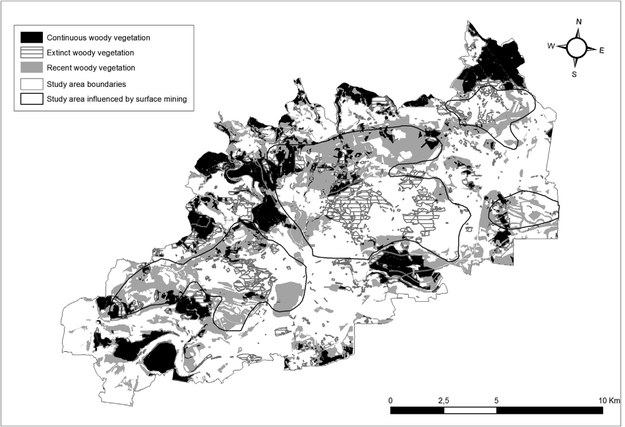Popular Science: Transformations of mining areas
The goal of the article was to determine processes in the area that have been happening over the last two hundred years. The authors used the original stable cadastre maps from 1842 and a database of land cover from 2010. An area spread over 200 km2 near the town of Sokolov was examined. One part of the landscape is influenced by surface mining, the other is not. The scientists were interested in changes of the forest cover in both parts and their comparison.
They used a GIS tool called spatial analysis for detecting the changes. In general, GIS is software for the effective capturing, analysis and administration of spatial data. They determined if the forest is continual between the years 1842 and 2010 or if there are other possibilities. The forest could disappear or reappear after 1842.
A low share of forest in mining areas was found in both years. The biggest share is taken by new forest; there is often reforestation made after the end of the mining and there are spontaneous successions as well. A lot of places are still used for mining, and that is a reason why the forest has retreated there, or in some places an agricultural landscape has changed into a mining area. In non-mining areas the forest is more continual and there is also growth caused by the extensification of the usage of the landscape – the abandonment of intensive agriculture, on the other hand there are newly-built areas.

Changes can generally be explained from different points of view. It depends on the scale. The first perspective is common throughout Europe. The industrial revolution led to industrialisation, urbanisation, and agricultural intensification. This led to the start of mining of important mineral resources and also many people left their rural way of life and moved into the towns. This trend endured for a long time; however for the Sokolov area we have a second perspective, as well. An important local factor was the cultural landscape after World War Two because of the evacuation of the German population. After the war about 45 000 Germans had to leave their homes from the study area and only 15 000 inhabitants came there. The forest management provided by noble families no longer existed either.
Industrialization caused the necessity of mining and changed the land cover, too. The non-mining areas have developed differently. The evacuation of Germans and the move into towns caused a decline in the population and the creation of new forests; they often grow in places where the mining was taking place.
The article helps to clarify spatial-temporal changes in the landscape caused by social processes; it contributes to the understanding of its dynamics and also opens possibilities of geographic information system usage.
Tomáš JANÍK
Document Actions